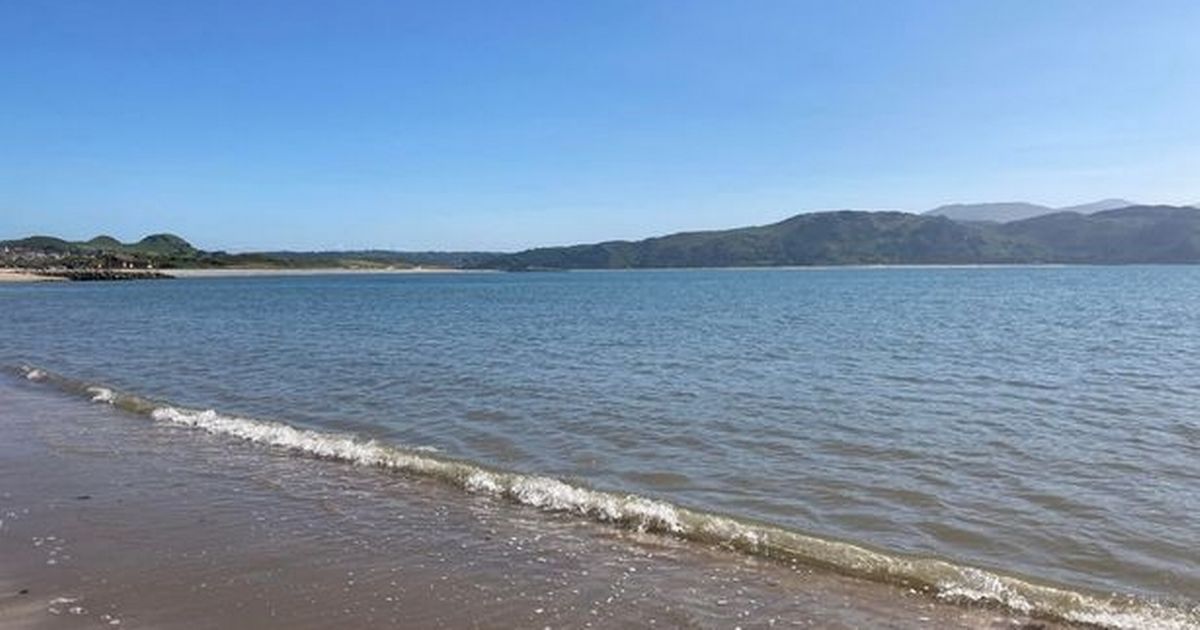Councillers have urged environmental chiefs to ‘get a grip of the problem quickly’ West Shore Beach, Llandudno, North Wales(Image: Christopher Davies / North Wales Live)
West Shore Beach, Llandudno, North Wales(Image: Christopher Davies / North Wales Live)
Beachgoers are being warned not to go swimming at a popular beach in North Wales after faecal bacteria was detected.
Conwy councillors have urged bathers to avoid West Shore Beach in Llandudno after receiving the latest findings from Natural Resources Wales (NRW) which monitors the waters for pollution on Monday, August 18.
Figures from Surfers Against Sewage show there have been more than 50 discharges from the area’s Dale Road storm overflow in the last three months, North Wales Live reports.
Cllr Louise Emery, of Llandudno’s Gogarth Ward, went online to warn locals and visitors: “Don’t swim at West Shore!” She added: “I received notification from the council this afternoon that recent bathing water samples are not up to standard and people are advised not to swim off the West Shore beach.
Never miss a story with the MEN’s daily Catch Up newsletter – get it in your inbox by signing up here
“Signs should be already down there but please pass the message onto your networks. The council will be updated via Natural Resources Wales when more water samples are taken.”
 West Shore Beach(Image: Jeff Buck/ geograph.org.uk)
West Shore Beach(Image: Jeff Buck/ geograph.org.uk)
According to Gogarth Mostyn representative Cllr Harry Saville, sampling revealed “high levels” of intestinal Enterococci. As bacteria that live in animals, including humans, their presence in the Conwy estuary indicates possible contamination by faecal waste.
But Dŵr Cymru Welsh Water said discharge data may have been compromised by a “false reading” and that any pollution event may have originated further up the estuary.
The estuary’s catchment extends around 15.5 miles (25km) to Betws-y-Coed. As well as sewage network overflows, the Afon Conwy and its tributaries capture seepage from sheep farming, forestry and old metal mines.
There are two storm overflows which discharge near West Shore itself. One, the West Shore overflow, has been relatively inactive in since May, with just two small incidents. However the Dale Road storm overflow has discharged 53 times in the past three months.
While many of these discharges were relatively brief, there have been longer episodes, notably on June 14 (six hours and 30 mins) and May 28 (seven hours and 30 mins).
 Passing on the warning was Cllr Louise Emery
Passing on the warning was Cllr Louise Emery
Cllr Saville said: “I’m very concerned that Cyfoeth Naturiol Cymru/Natural Resources Wales has requested that the public are advised against bathing or paddling at West Shore due to high levels of Intestinal Enterococci found in a recent water sample. I believe that signage is due to be displayed to that effect.
“West Shore is popular with locals and visitors. It’s essential that NRW and other stakeholders get a grip of this problem quickly.”
Bathing quality downgraded
In the past two years, NRW has downgraded West Shore’s bathing quality from “excellent” to “good”. A four-year sampling period (2021-2024) found trace amounts of sewage debris on less than 10% of visits, and trace amounts of animal faeces on a minority of occasions.
Litter was more common – trace amounts were identified on more than 50% of visits. Much less apparent were tarry residues, seen just once in June 2022.
According to Dŵr Cymru Welsh Water, a complex network of pumping stations operates at West Shore. One of these manages Afon Creuddyn, a culverted watercourse that runs through Llandudno and discharges at the Dale Road overflow .
Periodic releases here are mostly surface water only, said the company. Heavy rain may result in releases containing a highly diluted mixture of wastewater and rainwater. This is permitted under environmental regulations, stressed Dŵr Cymru.
A spokesperson added: “Our storm overflows did not operate on the day the sample was taken, or in the preceding days. This suggests the high levels of bacteria detected in this sample originate from another source of which there are many, including agricultural sources, septic tanks and animal faeces.
“We’re also investigating if our pumping station at Dale Road has a sensor fault which might have given false readings, showing it was discharging when it wasn’t.
“All other bathing water samples taken by NRW this season have met the ‘excellent’ threshold for bathing water quality.”
Join the Manchester Evening News WhatsApp group HERE
Over the next five years, the company aims to spend £4bn upgrading its network. This will include £889m to upgrade storm overflows and a further £42m on improving bathing and shellfish waters at eight sites.
Domestic pipe misconnections have been an historic issue affecting Llandudno’s beaches. This is where householders mistakenly plumb waste water pipes into surface water drains instead of the foul water sewerage system. Successive campaigns have sought to address this issue.
In 1999, major improvements were completed by Dŵr Cymru Welsh Water for Conwy, Deganwy, Llandudno and Colwyn Bay. Sewage is now pumped to the Ganol Wastewater Treatment Works at Llandudno Junction and disinfected through ultra violet treatment.
The treated waste is discharged through a sea outfall at Penrhyn Bay east of Llandudno. This scheme was designed to comply with the Shellfish Waters Directive, strictly regulating storage and the number of spills allowed.
For more of today’s top stories, click here.
